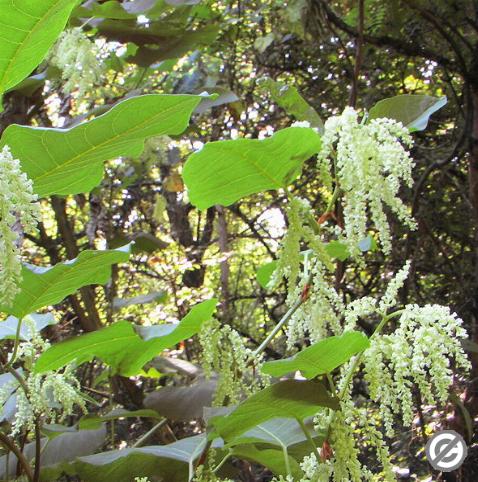Giant KnotweedScientific Name: Fallopia sachalinensis syn. Polygonum sachalinense syn. Reynoutria sachalinensis |
Giant Knotweed also known as Sakhalin Knotweed, is a perennial which originated in northeast Asia, but was brought to Europe as a fodder crop in the middle of the nineteenth century. It prefers a sunny or semi-shaded site on loamy, moderately moist soil. There are a number of varieties and the tallest can reach up to 5 metres in height. The hollow stems are reddish-brown at the base fading to light green higher up, with nodes along their length and some branching.
The topgrowth dies over the winter and because of the very fast regrowth rate it is harvested as biomass for energy production in some areas. Harvesting in August or September before leaf drop can produce dry-matter yields of 20 to 30 tonnes per hectare, with yields of 8 to 10 tonnes per hectare from a later harvest after the die-back of the stems.
The leaves are between 15 and 40cm long, heart-shaped at the stem end, with a blunt tip and wavy edges, arranged opposite to one another. An extract from the dried leaves can be used as a prophylactic treatment to inhibit the development of certain fungi especially powdery mildew and grey mould on plants (sold as Regalia in USA). The leaves are best gathered in June to obtain the highest amount of active ingredient.
The greenish-white flowers borne in dense panicles up to 10cm long, appear from September to October. The plants are dioecious, male-fertile flowers have extended anthers and female flowers have well-developed stigmas found on separate plants.
Cross-pollination can occur with Japanese Knotweed producing a hybrid plant Bohemian knotweed, Fallopia x bohemica.
Follow these links for further details on Weeds, Weed Removal and Weed Prevention.
